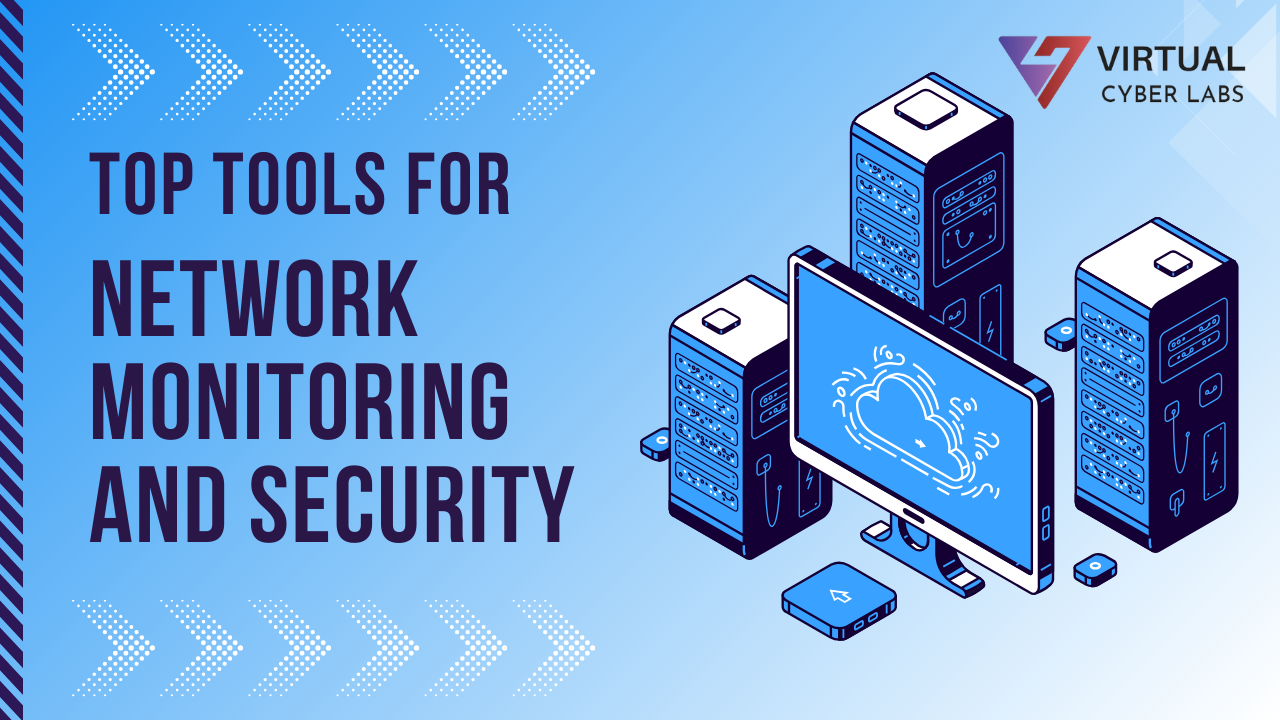2024 Top Tools for Network Monitoring and Security
In today’s interconnected world, businesses and organizations heavily depend on their networks for operations. As cyber threats become increasingly sophisticated, ensuring robust network monitoring and security is paramount. Choosing the right tools can make all the difference in safeguarding sensitive data, ensuring compliance, and maintaining operational efficiency. This blog delves into the top tools for network monitoring and security, highlighting their features, use cases, and advantages.

Why Network Monitoring and Security Tools are Essential
Network monitoring and security tools are the backbone of a resilient IT infrastructure. They enable administrators to:
- Detect anomalies: Quickly identify unusual activities that may indicate potential threats.
- Ensure uptime: Monitor network performance to prevent outages and maintain service continuity.
- Enhance compliance: Meet regulatory standards by ensuring data security.
- Streamline troubleshooting: Diagnose and resolve network issues faster.
- Prevent data breaches: Implement proactive measures against unauthorized access.
Categories of Network Monitoring and Security Tools
Before diving into specific tools, it’s important to understand the categories they fall into:
- Network Performance Monitoring (NPM): Tools that focus on tracking the performance and health of network components.
- Intrusion Detection and Prevention Systems (IDPS): Solutions that identify and mitigate unauthorized activities in real-time.
- Security Information and Event Management (SIEM): Tools that aggregate and analyze security data across the network.
- Endpoint Detection and Response (EDR): Tools that secure endpoints like laptops and mobile devices.
- Firewall and Unified Threat Management (UTM): Solutions for filtering traffic and blocking unauthorized access.
Top Tools for Network Monitoring and Security
1. Wireshark
Wireshark is one of the most widely used network protocol analyzers. It captures and inspects data packets in real-time, enabling in-depth troubleshooting and analysis.
Features:
- Real-time network traffic capture.
- Deep inspection of hundreds of protocols.
- Export data for offline analysis.
- Open-source and highly customizable.
Use Cases:
- Troubleshooting network performance issues.
- Detecting abnormal traffic patterns.
- Analyzing protocol-specific issues.
Advantages:
- Free and open-source.
- Extensive community support.
- Compatible with multiple platforms.
2. SolarWinds Network Performance Monitor (NPM)
SolarWinds NPM provides comprehensive network performance monitoring to help administrators ensure uptime and optimize network operations.
Features:
- Automated network discovery and mapping.
- Real-time performance tracking and alerting.
- Customizable dashboards and reports.
- Support for hybrid IT environments.
Use Cases:
- Monitoring bandwidth usage.
- Identifying slow network devices or links.
- Generating compliance reports.
Advantages:
- Scalable for large enterprises.
- Easy-to-use interface.
- Advanced visualization capabilities.
3. Splunk
Splunk is a powerful SIEM tool that offers real-time data collection and analytics, helping organizations monitor and secure their networks effectively.
Features:
- Centralized log management.
- Advanced threat detection with AI.
- Integration with third-party security tools.
- Incident response automation.
Use Cases:
- Detecting security breaches and anomalies.
- Meeting compliance requirements.
- Conducting forensic investigations.
Advantages:
- Scalable for small to large organizations.
- Robust analytics and reporting.
- Extensive integration ecosystem.
4. Nagios
Nagios is a robust open-source tool for monitoring system health, network performance, and application status.
Features:
- Network and server monitoring.
- Customizable alert thresholds.
- Plugins for extended functionality.
- Historical data analysis.
Use Cases:
- Monitoring server uptime.
- Identifying bottlenecks in network traffic.
- Proactively addressing system failures.
Advantages:
- Free and open-source with a large community.
- Extensive plugin library.
- Suitable for diverse IT environments.
5. Palo Alto Networks Prisma Access
Prisma Access offers cloud-based security and monitoring, ensuring secure connectivity for distributed workforces.
Features:
- Cloud-delivered firewall services.
- Secure access to applications and data.
- Comprehensive threat intelligence.
- Centralized management.
Use Cases:
- Protecting remote workers.
- Monitoring cloud environments.
- Ensuring secure access to SaaS applications.
Advantages:
- Scalable for organizations of all sizes.
- High-performance threat detection.
- Simplifies hybrid cloud security.
6. Snort
Snort is a widely respected intrusion detection and prevention system (IDPS) that provides real-time traffic analysis.
Features:
- Packet sniffing and logging.
- Real-time traffic monitoring.
- Rule-based intrusion detection.
- Open-source and community-driven.
Use Cases:
- Detecting malware and exploits.
- Monitoring suspicious network traffic.
- Implementing custom security rules.
Advantages:
- Free and open-source.
- Highly customizable.
- Widely supported by the security community.
7. ManageEngine OpManager
OpManager is a comprehensive network management tool designed for real-time monitoring and troubleshooting.
Features:
- Multi-vendor network monitoring.
- Automated network device discovery.
- Customizable workflows.
- Integrated fault and performance management.
Use Cases:
- Monitoring bandwidth usage.
- Ensuring network availability.
- Diagnosing performance issues.
Advantages:
- User-friendly interface.
- Cost-effective for SMBs.
- Advanced reporting and analytics.
8. FireEye Endpoint Security
FireEye offers advanced endpoint detection and response (EDR) capabilities, focusing on proactive threat hunting.
Features:
- Real-time threat detection.
- Forensic analysis of endpoints.
- AI-driven malware prevention.
- Centralized endpoint management.
Use Cases:
- Protecting critical business assets.
- Identifying zero-day threats.
- Responding to security incidents.
Advantages:
- Comprehensive endpoint protection.
- Rapid deployment.
- Backed by threat intelligence.
9. OpenVAS
OpenVAS (Open Vulnerability Assessment System) is a powerful tool for scanning and assessing network vulnerabilities.
Features:
- Extensive vulnerability database.
- Automated scanning and reporting.
- Integration with security tools.
- Customizable scans.
Use Cases:
- Conducting penetration tests.
- Identifying weak points in the network.
- Generating compliance audit reports.
Advantages:
- Free and open-source.
- Regular database updates.
- Suitable for SMBs and enterprises.
Choosing the Right Tool for Your Needs
Selecting the right network monitoring and security tool depends on factors such as:
- Organization Size: Larger organizations may require scalable tools with advanced features.
- Budget: Open-source tools like Wireshark and Nagios are cost-effective, while premium tools offer enhanced capabilities.
- Specific Requirements: Define your needs, such as performance monitoring, threat detection, or compliance reporting.
- Ease of Use: Choose tools with intuitive interfaces and robust support communities.
- Integration: Ensure the tool integrates seamlessly with your existing IT infrastructure.
Conclusion
Network monitoring and security are critical components of modern IT infrastructure. By leveraging tools like Wireshark, Splunk, SolarWinds NPM, and Prisma Access, organizations can protect their networks, ensure performance, and mitigate risks. Whether you’re a small business or a large enterprise, investing in the right tools will empower you to stay ahead of evolving threats and ensure operational resilience. Evaluate your needs, explore the tools discussed above, and take proactive steps to secure your network today.







